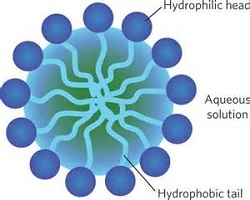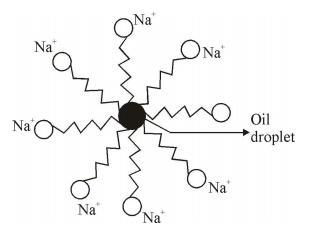Carbon and its compounds
CBSE Class 10 Science Revision Notes Chapter 4 Carbon and its compounds
- Carbon is a versatile element. Found in .02% in form of minerals an 03% in form of
- All living structures are carbon based.
Covalent Bond in Carbon
- The atomic number of carbon is 6 and its electronic configuration is 2, 4. To attain a noble gas configuration it requires four more electrons in its valence shell.
- It is difficult for an atom of carbon to either gain or lose electrons as it would be difficult to hold extra electrons and would require a large amount of energy to remove four electrons.
- Carbon attains the noble gas configuration by sharing its valence electrons with other atoms.Such mutual sharing of electrons between atoms to attain a stable noble gas configuration is called Covalent bonding.
- Atoms of other elements like hydrogen, oxygen, nitrogen, chlorine also show sharing of valence electrons.
- Depending on the number of electron pairs shared, covalent bond is of three types :
- Single Covalent Bond: Single covalent bond is formed because of sharing of two electrons,i.e one pair .Example : Hydrogen,Chlorine,Methane.
- Double covalent bond: Double bond is formed by sharing of four electrons,i.e two pairs of electrons. Example : Oxygen molecule,Carbon Dioxide molecule.
- Triple Covalent Bond: Triple covalent bond is formed because of the sharing of six electrons, three pairs of electrons. Example :Nitrogen,C2H2
Properties of Covalent Bonds.
– Covalently bonded molecules have low melting and boiling points .
–comparatively weaker intermolecular forces, unlike ionic compounds.
– These molecules are generally poor conductor of electricity since no charged particles are formed.
Two important properties which enable carbon to form enormously large number of compounds.
1. CATENATION is property of carbon atom to form bond with other atoms of carbon. Like carbon, silicon forms compounds with hydrogen upto seven or eight atoms of silicon called silanes.
2.TETRA VALENCY : Having a valency of 4, carbon atom is capable of bonding with atoms of oxygen, hydrogen, nitrogen, sulphur, chlorine and other elements. Since it requires four electrons, carbon is said to be tetravalent.
The smaller size of carbon atom enables nucleus to hold the shared pair of electrons strongly, thus carbon compounds are very stable in general.
HYDROCARBONS: The compounds which are majorly made of hydrogen and carbon atoms.Hydrocarbons are further classified as
Saturated and Unsaturated Carbon Compounds
Saturated Compounds : Saturated compounds are hydrocarbons in which hydrogen and carbon have single bonds. They are also known as Alkanes.
ALKANE :
Unsaturated Compounds : hydrocarbons in which hydrogen and carbon have double or triple bonds. hydrocarbons with double covalent bonds are alkenes and those with triple covalent bonds are alkynes.
ALKENE :
Note : alkene does not exist with one carbon atom, thus, methene does not exist.
ALKYNE :
note : minimum two carbon atoms are required to form alkyne.
A part from branched structures, carbon compounds are present in cyclic form. Example: Electron Dot structure :Lewis structures (\electron dot structures) are diagrams that show the bonding between atoms of a molecule and the lone pairs of electrons that may exist in the molecule.
Steps to draw a Lewis structure :
1. Decide how many valence (outer shell) electrons are possessed by each atom in the molecule.
2.If there is more than one atom type in the molecule, put the most metallic or least electronegative atom in the center. Recall that electro-negativity decreases as atom moves further away from fluorine on the periodic chart.
3.Arrange the electrons so that each atom contributes one electron to a single bond between each atom.
4.Count the electrons around each atom: are the octets complete? If so, your Lewis dot structure is complete.
5. If the octets are incomplete, and more electrons remain to be shared, move one electron per bond per atom to make another bond. Note that in some structures there will be open octets (example: the B of BF3), or atoms which have ten electrons (example: the S of SF5)
6. Repeat steps 4 and 5 as needed until all octets are full.
7. Redraw the dots so that electrons on any given atom are in pairs wherever possible.
Electron dot structure of a saturated carbon compound, ethane is as follows:
Electron dot structure of an unsaturated carbon compound, ethene is as follows:
TRY DRAWING THE ELECTRON DOT STRUCTURE OF ETHYNE
Formulae and Structures of Saturated Compounds of Carbon and Hydrogen
On the basis of structures the hydrocarbons can be:
Structural isomers : These are the compounds having identical molecular formula but different structures. For example, isomers of butane.
NOMENCLATURE : Nomenclature is the system of assignment of names given to organic compounds.
Heteroatom and Functional Group
- In hydrocarbon chain, one or more hydrogen atoms can be replaced by other atoms in accordance with their valencies. The element that replaces hydrogen is called a hetero atom.
- These hetero atoms and the group containing them impart chemical properties to the compound and hence are called functional groups.
Homologous Series
- It is a series of compounds in which the same functional group substitutes for hydrogen in a carbon chain.
- For instance, the ALCOHOLS :
OH,
,
,
- The successive member differs by one -CH2 unit and 14 units of mass.
- The chemical properties are imparted by the functional group thus all members have similar chemical properties. But the members have different physical properties.
- The physical properties vary among the members of homologous series due to difference in their molecular mass.
- Melting point and boiling point increases with increasing molecular mass.
How to name carbon compounds : NOMENCLATURE
1. Identify the number of carbon atoms in the compound.
2. Functional group is indicated either by prefix or suffix.
Functional Group Suffix Prefix
Alkene- ene
Alkyn- yne
Alcohol- ol
Aldehyde- al
Ketone- one
Carboxylic acid- oic acid
chlorine -chloro
3. If a suffix is added, then final ‘e’ is removed from the name e.g.methanol (methane-e = methan + ol).
Chemical Properties of Carbon Compounds
1. COMBUSTION
- Carbon compounds generally burn (oxidize) in air to produce carbon dioxide and water, and release heat and light energy.
- Saturated hydrocarbon burns generally with a blue flame in good supply or air and with a yellow sooty flame in limited supply of air.
- Sooty flame is seen when unsaturated hydrocarbons are burnt.
- Burning of coal and petroleum emits oxides of sulphur and nitrogen which are responsible for acid rain.
2. OXIDATION :
- Alcohols can be converted to carboxylic acids by oxidizing them using alkaline potassium permanganate or acidified potassium di-chromate (they add oxygen to the reactant, thus are called oxidizing agents).
3. ADDITION REACTION
Hydrogen is added to unsaturated hydrocarbon in presence of palladium or nickel as catalyst.
Saturated fatty acids are harmful for health and oils with unsaturated fatty
In saturated hydrocarbons, the hydrogen attached to carbon can be replaced by another atom or group of atoms in presence of sunlight.
Ethanol and Ethanoic Acid Ethanol
- Consumption of dilute ethanol causes serious health issues and intake of pure alcohol is lethal.
CHEMICAL PROPERTIES OF ETHANOL
| When |
Ethanoic Acid ( /Acetic Acid :
- 5-8% solution of acetic acid in water is called vinegar.
- Pure acetic acid is called glacial acetic acid
SODIUM NaSODIUM ETHANOATE AND HYDROGENSODIUM CARBONATE
| REACTS WITH | PRODUCTS | |
| 1. | ||
| 2. | SODIUM ETHANOATE, CARBON DIOXIDE AND WATER | |
| 3. | SODIUM BICARBONATE | SODIUM ETHANOATE, CARBON DIOXIDE AND WATER |
| 4. | ETHANOL (IN PRESENCE OF CONC. SULPHURIC ACID) | ESTER AND WATER |
| 5. | NAOH | SODIUM ETHANOATE AND WATER |
ethonol of ester – ethnoic acid – ethyl ethanoate
Carboxylic acids react with alcohols in presence of few drops of concentrated sulphuric acid as catalyst and form sweet smelling compounds called ester.
Hydrolysis On heating with an acid or a base the ester forms back the original alcohol and carboxylic acid.
- Alkaline hydrolysis of ester is also called saponification.
Soaps and Detergents
- Soap is sodium and potassium salt of carboxylic acids with long chain.
- Soaps are effective with soft water only and ineffective with hard water.
- Detergents are ammonium or sulphonate salts of carboxylic acids with long chain. They are effective with both soft as well as hard water.
An ionic part (hydrophilic) and a long hydrocarbon chain (hydrophobic)part constitutes the soap molecule.

Long chain of carboxylic acid, hydrophobic ionic end, hydrophilic
Structure of a Soap molecule
Cleansing Action of Soaps
Most dirt is oily in nature and the hydrophobic end attaches itself with dirt, while the ionic end is surrounded with molecules of water. This result in formation of a radial structure called micelles.

- An emulsion is thus formed by soap molecule. The cloth needs to be mechanically agitated to remove the dirt particles from the cloth.
Scum : The magnesium and calcium salts present in hard water reacts with soap molecule to form insoluble products called scum, thus obstructing the cleansing action. Use of detergents overcome this problem as the detergent molecule prevents the formation of insoluble product and thus clothes get cleaned.
